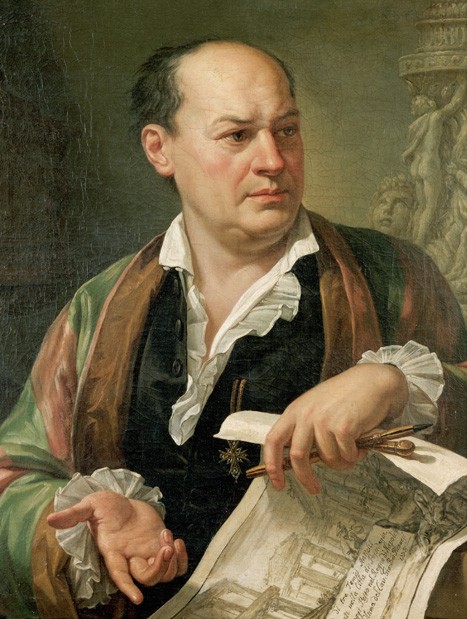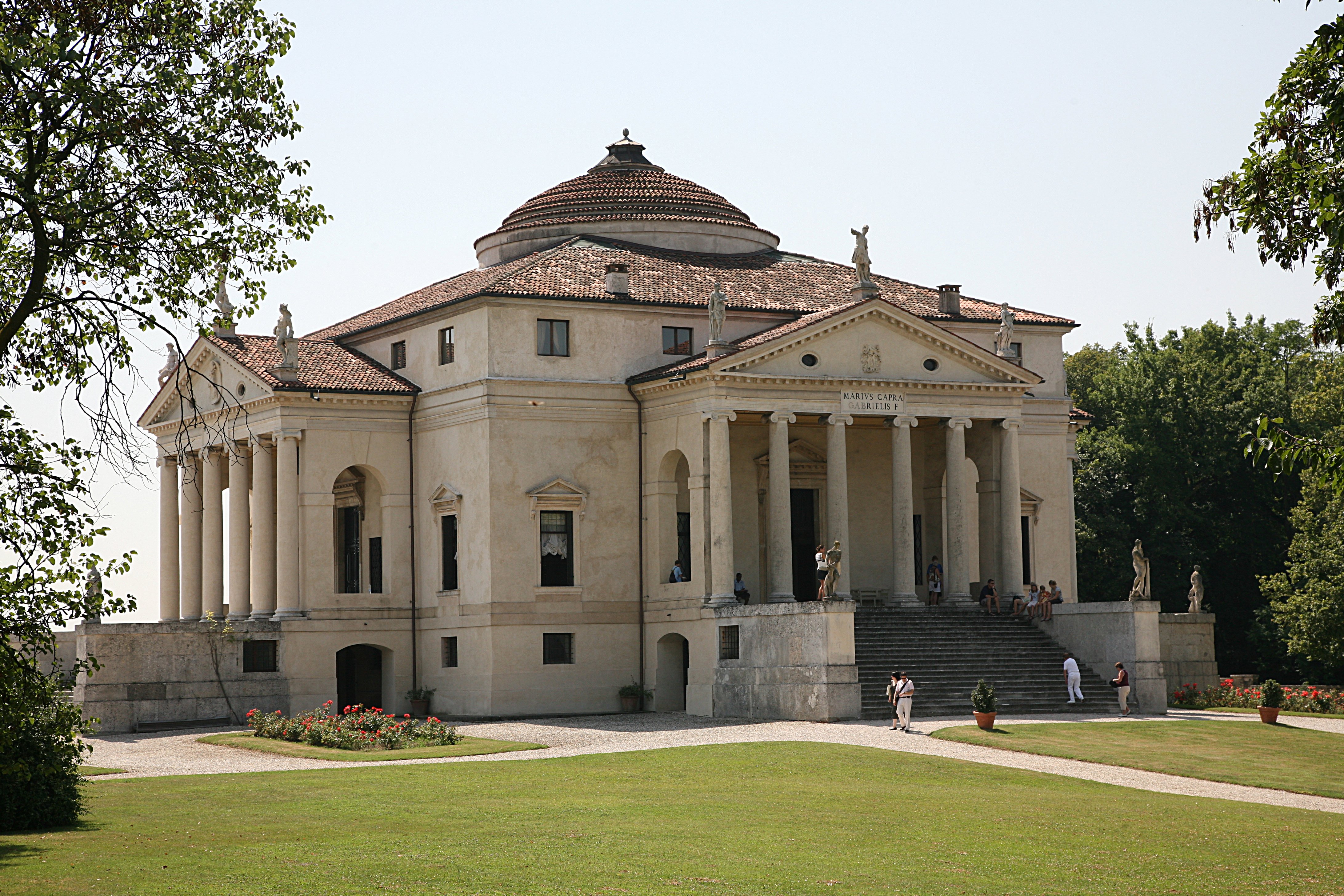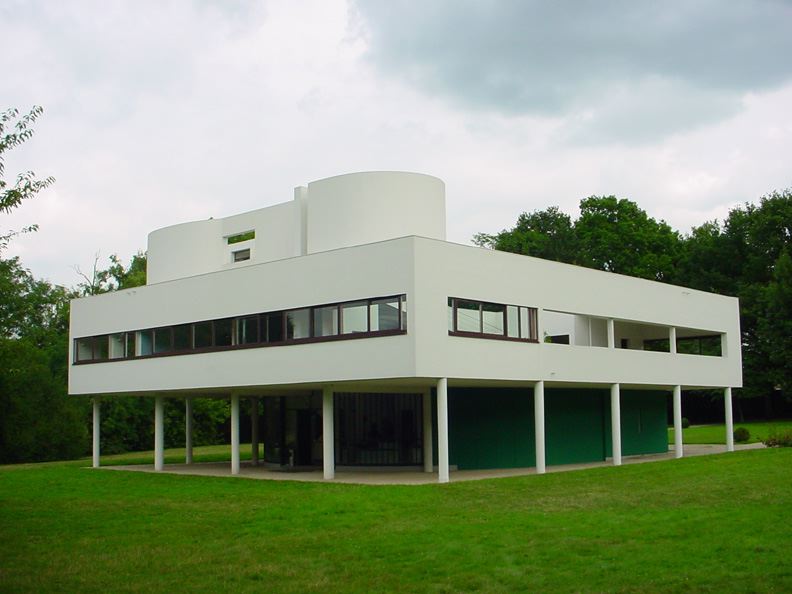October is National Architecture Month, also known in some circles as Archtober. To commemorate the month, I am going to post a brief post every day of the month.
Perspective drawings allow architects to look at the building in three dimensions. They can be constructed or “eyeballed”. Perspectives approximate the way that we see reality by establishing a horizon line at “eye height” and “vanishing points”, where the lines of the drawings, if extended, would converge. Perspectives are another tool architects use to study the design of a building, or record what they are seeing.
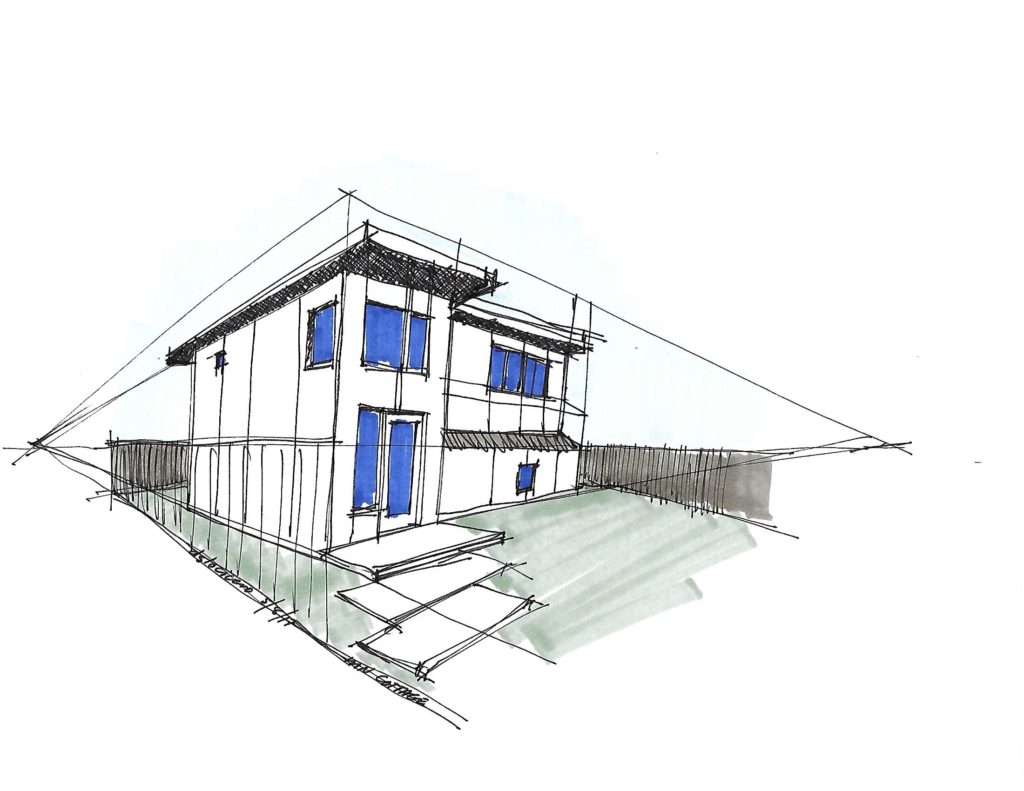
The drawing above is a perspective sketch I did of a project in Berkeley. In this drawing you can see the horizon line (the top of the fence) which runs across the sketch. You can also see the vanishing points (one to the left, one to the right, and how the “horizontal” lines of the sketch would converge on those two points if they were extended. The sketch gives a good approximation of what the building will look like.
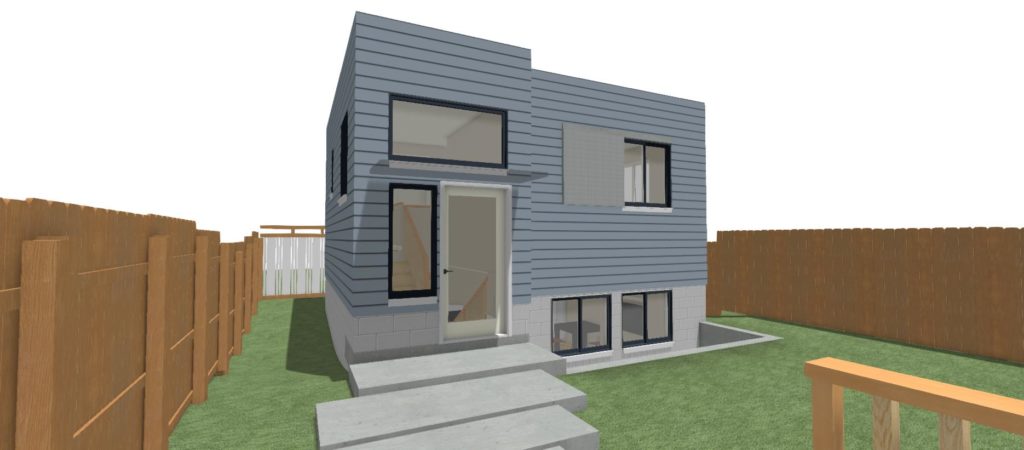
The drawing above is a computer generated perspective of the same building. The design has changed a little bit, but you can see it is the same little cottage. I let the computer do the constructed perspectives now, because the computer can do it far more quickly than I can. It can also generate more detail than I can. For instance, you can see the stair inside the entry, and the furniture inside the lower floor room.

The perspective above is by the great 18th century Italian perspectivist, Giovanni Battista Piranesi. He was a print maker, engraver, and architect. He is most well know for creating and publishing perspective drawings of the Roman ruins in Rome, Italy.
His engravings captured the grandeur and romanticism of the ancient structures. He created series of engravings which travelers from northern Europe, especially the United Kingdom, could bring home with them as souvenirs. In this way, he contributed to the spread of classical architecture through out Europe.

